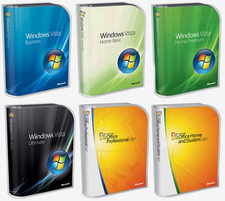Has Microsoft lost its way on desktop computing?


For example, my colleague Mary Jo Foley reported in late February on a talk given by Microsoft's Chief Research and Strategy Officer Craig Mundie to the Goldman Sachs Tech Investment Symposium. What was his version of Microsoft's vision for the future of desktop computing?
A pitch for the company's Surface input technology.
This is where future iterations of Microsoft’s Surface multi-touch technology will come into play, Mundie said. Microsoft isn’t looking at multi-touch as a technology only for tabletops, PCs and cellphones. It expects Surface-like computing systems to find their ways into desks, kitchen counters, and walls, too, over the next five to ten years. ...
Mundie said that Microsoft already knows how to make the Surface cheaper. (The first Surface devices, tabletops aimed at the hospitality and retail industries, cost tens of thousands of dollars per unit.) It was unclear from Mundie’s remarks whether Windows will be what powers the future Surface devices; Surface 1.0 units are Windows-Vista-based.
Do you see the problem? Aside from the initial problem that Surface is a techno-boondoggle, where's the discussion of applications that can use all the power from the hardware that we might throw at them as well? Where are the innovations from a Microsoft OS that will enable them? Where's the application and software technology that will drive computing forwards?
Instead, Mundie offers Surfaces, Microsoft's latest technology in search of a market. How can a replacement for the mouse be considered a desktop strategy?
Of course, there's more to the deficits in Microsoft's desktop strategy than Surface. As further evidence, take this slice of Om Malik's March interview of Microsoft’s Chief Software Architect Ray Ozzie.
OM MALIK: You outlined Microsoft’s software-plus-services strategy, but what I want to know about is the changing role of the desktop in this service’s future.
RAY OZZIE: I think the real question is (that) if you were going to design an OS today, what would it look like? The OS that we’re using today is kind of in the model of a ’70s or ’80s vintage workstation. It was designed for a LAN, it’s got this great display, and a mouse, and all this stuff, but it’s not inherently designed for the Internet. The Internet is this resource in the back end that you can design things to take advantage of. You can use it to synchronize stuff, and communicate stuff amongst these devices at the edge.
A student today or a web startup, they don’t actually start at the desktop. They start at the web, they start building web solutions, and immediately deploy that to a browser. So from that perspective, what programming models can I give these folks that they can extend that functionality out to the edge? In the cases where they want mobility, where they want a rich dynamic experience as a piece of their solution, how can I make it incremental for them to extend those things, as opposed to learning the desktop world from scratch?
So, Microsoft's desktop strategy appears to really be all about — drum roll here — software as a service (SaaS) technology and integration for mobility. That's a desktop computing strategy?
From Ozzie's viewpoint, desktop computing is useful but old fashioned. He wants to put the Internet first. Sure, you can get work done on the desktop but the real interest is in edge computing.
Now, let's take a look at Apple. From what I can see, while Apple has been distracted at times with its mobile device strategy, the company is mostly holding to its Digital Hub strategy initiated some 7 years ago. This idea is where Apple customers will create digital content, use connected digital peripherals and then distribute that content in various media.
Apple's strategy is based on the supposition that all users, whether business or consumer, want (or need) to create content, and not just view it. The better the client performance (in hardware and software), the better the experience. And as we know, Apple cares about that experience.
This strategy relies upon high-performance client machines for both professional and consumer markets. The more power the better. The company makes a robust OS for those machines as well as a range of software applications that take advantage of the performance.
What we can determine of the Microsoft desktop strategy is in many ways Apple's opposite. The desktop provides the base for productivity applications, and a platform for the browser. Now it will provide a platform to run SaaS apps. The computing power can move away from the client and out to the cloud.
Microsoft's desktop strategy has been and continues to be a prescription for mediocrity. No wonder that the PC market is so focused on cost, commoditization and the entry-level machine. It discounts desktop performance as only necessary for niche markets.
Now, not everyone is buying Redmond's line, even in the enterprise. The steady stream of business and enterprise switchers to the Mac platform shows that for some tech customers mediocrity isn't a value. Nor a vision.